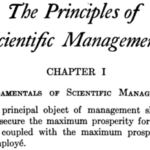A major challenge we run into when helping organizations shift or improve is leadership misconceptions. Agile leadership myths cause a lot of these misconceptions. We need to help avoid falling into the trap of these common myths because they limit our success. A root cause of many of the myths is that people simply don’t know what else to do. For example, Myth #1: ‘telling people “you are empowered” actually works.’ Leaders often don’t know what else to do, other than tell teams they are empowered. We see this with Development Teams, Scrum Teams, Delivery Teams, AND Leadership Teams.
For example, Myth #1: ‘telling people “you are empowered” actually works.’ Leaders often don’t know what else to do, other than tell teams they are empowered. We see this with Development Teams, Scrum Teams, Delivery Teams, AND Leadership Teams.
A bit of background — there are many agile leadership myths out there. These myths (or assumptions) limit leaders ability to improve, help others, and succeed. Many myths seem to occur at a nonconscious level, meaning they function like many biases. People are not even aware, consciously, that they are happening.
Continue Reading→




 “Oh, my teams are definitely high-performing.” I’ve heard this from countless managers in numerous organizations. Sometimes I wondered where they were keeping all the low-performing teams. Understandably, managers responsible for developing teams want to be seen as doing a good job. Isn’t the promise of high performance the reason we form teams? Without a clear definition of what “high performance” means, it’s easy to defend describing many teams with that term. And if a team is already high-performing, they don’t need to get better, right?
“Oh, my teams are definitely high-performing.” I’ve heard this from countless managers in numerous organizations. Sometimes I wondered where they were keeping all the low-performing teams. Understandably, managers responsible for developing teams want to be seen as doing a good job. Isn’t the promise of high performance the reason we form teams? Without a clear definition of what “high performance” means, it’s easy to defend describing many teams with that term. And if a team is already high-performing, they don’t need to get better, right?









 For example, Myth #1: ‘telling people “you are empowered” actually works.’ Leaders often don’t know what else to do, other than tell teams they are empowered. We see this with Development Teams, Scrum Teams, Delivery Teams, AND Leadership Teams.
For example, Myth #1: ‘telling people “you are empowered” actually works.’ Leaders often don’t know what else to do, other than tell teams they are empowered. We see this with Development Teams, Scrum Teams, Delivery Teams, AND Leadership Teams.